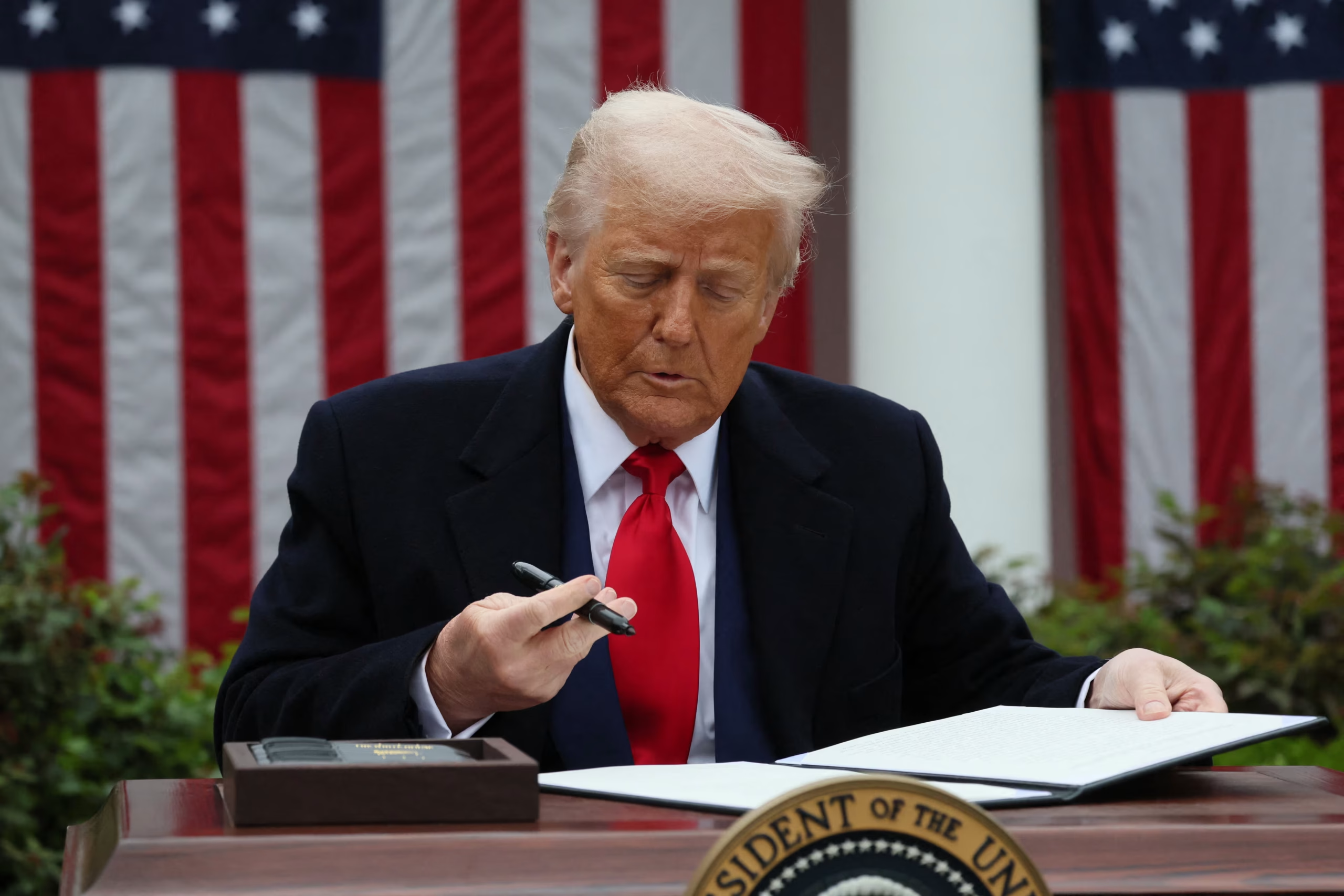Why Trump’s Tariff Deadline Delay Is Just Another Twist in a Long Trade Standoff.
It was supposed to be a deadline. July 9 was the date the US was meant to crank up tariffs on imports from key trade partners like Japan and South Korea. But instead of pressing the button, President Donald Trump has done what he often does—made a dramatic show of postponement while keeping the threat very much alive.
On Monday, just days before the tariffs were due to take effect, Trump announced a new deadline: August 1. In true Trump fashion, he paired this extension with another round of public warnings, sending out formal letters to 14 countries, informing them of the new levies headed their way unless, of course, they decide to play ball.
Among those on the receiving end were Japan, South Korea, Thailand, Malaysia, and a range of smaller economies from Laos to Serbia. Some of the newly announced tariffs are eye-watering: 40% on goods from Myanmar and Laos, 36% on Thailand and Cambodia, 35% on Bangladesh, 32% on Indonesia, and 25% on Japan, South Korea, and Malaysia. These aren’t gentle nudges—they’re economic battering rams.
When asked if August 1 was set in stone, Trump gave one of his signature hedge-answers: “I would say firm, but not 100% firm.” In other words—it's a deadline until it's not. If a leader calls and flatters him enough, the deadline may move again.
A Familiar Pattern
This is the same dance we’ve seen before. Trump threatens big, the markets wobble, countries panic, and then he steps back slightly—just enough to make it seem like he's being reasonable, all while keeping the pressure cooker hissing. It's a tactic that might have worked once or twice. But now? It's starting to feel like the world is catching on.
Economists, unsurprisingly, are not impressed. Adam Ahmad Samdin from Oxford Economics noted that this extension was predictable, since trade deals are “extremely detailed” and can take years to finalize. Vietnam recently struck a framework agreement with the US—but even that’s nowhere near a full deal.
Meanwhile, Trump insists his tariffs will protect American jobs and boost domestic manufacturing. He calls them "reciprocal" and claims they're necessary to level the playing field. But Wall Street didn’t seem to agree. On Monday, all three major US indexes slipped, and Japanese auto giant Toyota—one of the biggest players in the American market—saw its US-listed shares drop 4%.
In reality, tariffs are more like wielding a sledgehammer when what’s needed is a scalpel: blunt and damaging, not precise. According to the Peterson Institute for International Economics, tariffs imposed since 2018 have raised costs by about $1,000 per American household annually—a steep price for promises yet to be fulfilled.
🔍 Curious how celebrity estates are managed? Don’t miss our deep dive into Paris Jackson’s $150M net worth and complex inheritance from her father, Michael Jackson.
People Also Ask
What countries are facing new US tariffs?
As of August 1, countries like Japan, South Korea, Malaysia, Indonesia, Thailand, Bangladesh, Cambodia, Laos, and several others face new tariffs ranging from 25% to 40%. The exact rate depends on each country's current relationship with the US.
Why did Trump delay the tariffs again?
The White House says it wants to give trade negotiations more time, but critics argue it's part of a repetitive pattern where deadlines are used more as bargaining chips than policy anchors.
Do these tariffs actually work?
Most economists say no. While they can pressure countries into negotiations, tariffs often result in higher consumer prices, trade disruptions, and retaliation. Manufacturing gains have been minimal, and in some sectors, non-existent.
What is the status of US trade deals?
So far, the US has finalized agreements with the UK and Vietnam, and a partial deal with China. However, most of these deals raised tariffs compared to pre-Trump levels and left major issues unresolved. A deal with India is reportedly close.
A Strategy Past Its Sell-By Date
To the countries on Trump’s new tariff hit list, this is all starting to look familiar—and exhausting. Japan’s Prime Minister Shigeru Ishiba said the tariffs were "deeply regrettable" and reiterated his commitment to talks. South Korea is also scrambling to strike a deal before August. Thailand is hoping for a “fairer” rate. Even South Africa’s President Cyril Ramaphosa publicly slammed the move as “unilateral.”
Beyond these nations, the European Union and various trade groups have voiced growing concern, warning that continued tariff threats risk sparking a broader trade war that could harm the global economy. The EU’s frustration is palpable after Trump recently threatened a 50% tax on their goods.
Back in Washington, Trump’s press secretary insisted the threats were working—saying leaders are “begging him to come to a deal.” Treasury Secretary Scott Bessent claimed his inbox is overflowing with “new proposals.” Whether that’s spin or reality is anyone’s guess.
But here’s the problem: these tactics are stale. The tariffs haven’t meaningfully boosted American industry. They’ve spooked markets, raised prices for US consumers, and strained global partnerships. Even Trump’s so-called “wins” in trade have come at a cost—and most remain unfinished or vague in scope.
It’s becoming clear that tariffs are no longer a bold negotiating tool. They’re a failed idea that the president can’t seem to let go of. And with each new letter, each delayed deadline, and each round of threats, Trump isn't protecting the US economy—he’s isolating it.















